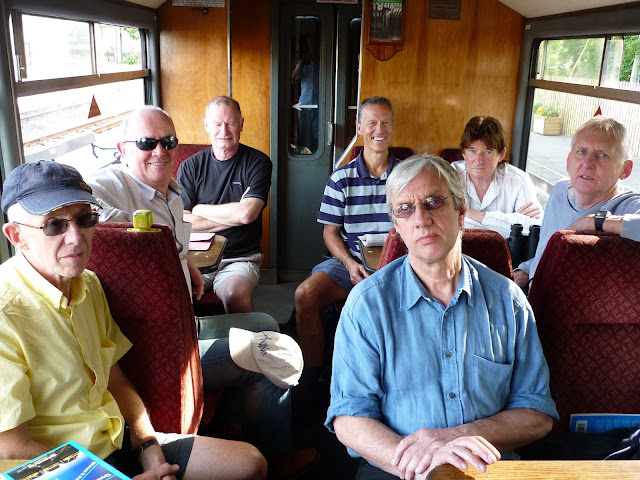As with the records
provided in previous years, only original railway paintings that were sold at the
main railwayana auctions during 2018 are included below - GCRA, GNRA, GWRA, railwayana.net,
Stafford and Talisman. Postal auctions are not included, neither are results
from general auction houses that hold occasional railwayana auctions, nor those
that have railwayana sections within mixed sales. Further railway paintings will
certainly have changed hands in fine art sales elsewhere during the same period.
All the information from which this summary has been taken has been available
in the auction houses’ own online archives. There were fewer solely railwayana
auction outlets in 2018 than in preceding years. Crewe RA and Solent RA are
sadly no longer trading following bereavements. Talisman RA postponed a planned
summer auction for health reasons. Bristol [April] and GWRA [November] auctions
had no sales of original art work on railway subjects.
1. The number of
original railway paintings sold at the main live auctions [and including the
one internet railwayana auction house] fell sharply again in 2018, continuing
the 2017 reversal of the previously upward trend that was apparent between 2011
and 2016:
2011 - 32, 2012 - 41,
2013 - 61, 2014 - 88, 2015 - 105, 2016 – 136, 2017 – 81, 2018 - 66.
2. Not surprisingly,
therefore, in 2018 the number of railway artists whose work was sold at these
auctions also continued to fall from its peak in 2016:
2011 - 25, 2012 - 20,
2013 - 27, 2014 - 34, 2015 - 42, 2016 – 48, 2017 – 31, 2018 - 25.
3. In 2018, the number
of railwayana auction events that sold railway paintings was less than in each
of the previous four years:
2011 - 7, 2012 - 10,
2013 - 13, 2014 - 19, 2015 - 18, 2016 – 22, 2017 – 18, 2018 – 14.
4. In 2018, the number
of artists whose work topped the £1,000 hammer price at railwayana auctions showed
an increase from last year. In each year since 2011, the number of such
paintings sold and the artists concerned were:
2011 - 3 paintings - by
Heiron [2], Broom,
2012 - 3 paintings - by
Bottomley, Hawkins, Broom,
2013 - 8 paintings - by
Broom [2], Breckon [2], Heiron, Root, Price, Freeman,
2014 - 7 paintings - by
Root [3], Elford, Breckon, Freeman, Hawkins,
2015 - 11 paintings - by
Breckon [3], Hawkins [2], Root [2], Beech, Ellis, Elford, Price.
2016 - 13 paintings - by
Breckon [4], Price [3], Hawkins [2], Freeman, Root, Broom,
Greene,
2017 - 7 paintings -
by Freeman [2], Price [2], Broom, Root, Breckon,
2018 - 9 paintings -
by Hawkins [4], Breckon [2], Price [2], Root,
Overall, railway
paintings continue to make an important contribution to the variety of objects for
sale at railwayana auctions. Examples of original artwork are often used as
catalogue cover illustrations for these auctions. The period 2011 to 2016
showed a fairly dramatic rise in activity for railway art at such auctions but
has been followed by a reduction since. However, the work of certain railway
artists is consistently well-regarded by those prepared to buy high quality
items for substantial four-figure sums at railwayana auctions. The prolific
output over recent years from Guild of Railway Artists associate member, Joe
Townend, continued in 2018, during which 18 of his paintings were sold at the
live auctions.










































